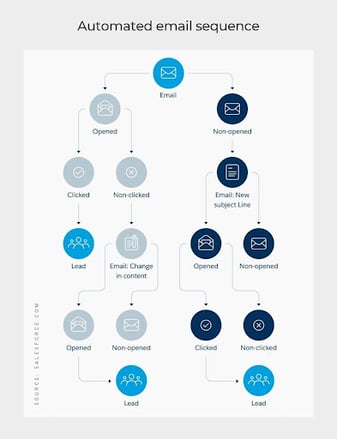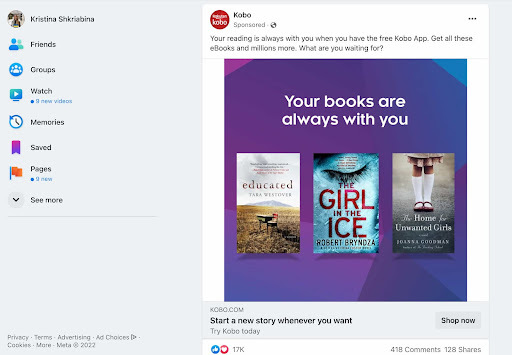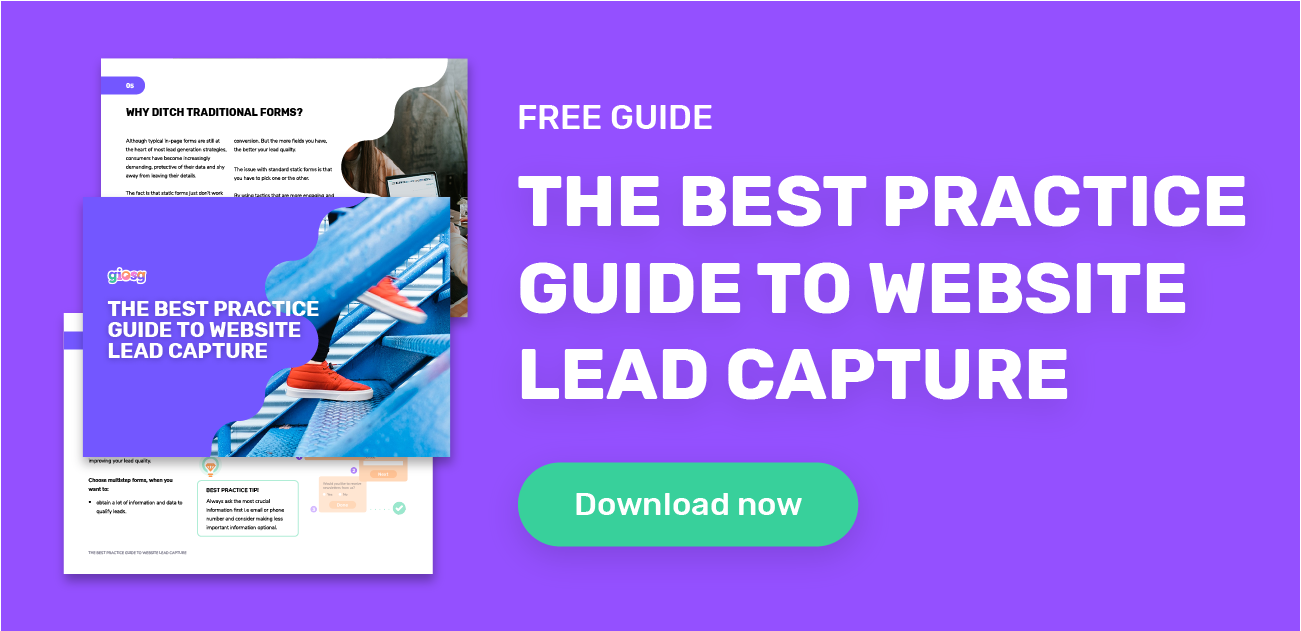An eCommerce business should never be only about selling a product but also about developing relationships with your audience.
People want to do business with organisations that they trust act with customers’ best interests in mind.
According to a Salesforce report, 86% of consumers expect sales reps to understand their unique challenges and offer tailored solutions to them.
No wonder launching a lead nurture campaign is not an easy task. You definitely need a dedicated team to devise a personalised marketing plan and effective software to get the job done.
To make things easier for your eCommerce strategy, we put together all the best practices and tips on nurturing leads. But let’s first get back to the basics.

What is lead nurturing?
Lead nurturing is an ongoing valuable conversation with your contacts through all stages of the buyer’s journey. It shines a light on your products or services.
The 3 primary goals of lead nurturing are:
- To educate your audience on solutions to their pain points
- To build trust by showing that your brand cares about people
- To engage with the audience to increase the chances of conversion
Why should you nurture leads?
According to Marketing Sherpa, 79% of new leads don’t result in a sale. No matter how cool your website’s design is, if people aren’t ready to buy, they won’t buy.
The good news is that you can change it. Lead nurturing will help you explain to potential customers (leads) why they need your help and how you will solve their problems.
With the right lead nurturing strategy, you will be able to:
- provide relevant content at every stage of the buyer’s journey
- show that you’re on the same page with a person and your solution is their top choice
Among other benefits of lead nurturing is that you will:
- Understand your customers' needs
- Attract new visitors and subscribers (if you create a helpful guide, your leads will share it with coworkers or friends)
- Build a reputation as a trusted leader in your industry
To show you how one can achieve such results, let us walk you through the top 3 lead nurturing ideas that we’ve come up with.
3 lead nurture best practices for eCommerce
Best practice #1: Segment your leads
An excellent start to nurture your contacts is grouping them based on their shared interests, behaviour, and needs. It will help you to send relevant messages later. That process is called lead segmentation.
So, how does it work?
Step 1: Know your audience
First of all, you have to collect visitor information that’s important to you – their name and email are obligatory. Other attributes depend on your needs. It could be a job title, income, location, age, purchase history – or any characteristic related to your customer profile.
How can you gain this data? Through lead capture forms, checkout pages, and chatbots.
A lead capture form is a tool that collects contact information by giving users something in exchange for their data – a guide, discount, or a demo. The best thing about lead capture forms is that you can put them in place without writing a single line of code.
For example, giosg has a drag-and-drop form builder where you can choose a form design, break the form down into multiple steps, and choose the right time to show it. As a result, visitors will be engaged.
A checkout page is a page on an eCommerce website where the shopper makes a payment and provides the information for delivery and contact details for invoicing. Because trying to reduce shopping cart abandonment is a common goal with online stores, the checkout page should be user-friendly.
A lead generation chatbot is often built to automate conversations between companies and their customers. Chatbots not only gather leads’ information but also guide them in the buying process.
Step 2: Create segments
There are many ways to divide subscribers into smaller groups – by geographic, demographic, sociographic, corporate characteristic, or based on behaviour. The primary rule here is to set criteria that matter to you.
For example, you can end up with some of these lists:
- Cold leads
- Warm leads
- Old leads
- Lost leads
- Existing customers (single purchase)
- Repeat customers
- Homepage visitors
- Product/service page visitors
- Repeat visitors
- Subscribers
- Content downloaders
- Shopping cart abandoners
- Demographics (age, location, etc.)
The more specific you get into your list, the more effective your messages are. Following this simple advice, you can increase email revenue by 760% (as estimated by marketers in the DMA survey).
Step 3: Automate the lead lifecycle
It is impossible to process all the data mentioned in this post and then manually manage it to create segments. At the very best, it will take you weeks, while this task can be done in minutes with automation tools. This is one of the areas where customer relationship management (CRM) software has really excelled in recent years. For example, if you are a real estate agency, you can use real estate CRM that helps you manage your customer data, make automated calls, send personalized emails, and improves overall efficiency.
A CRM platform is a platform of tools that help you manage leads, create complex segments, and target specific actions. Moreover, CRM simplifies other marketing and sales activities like:
- Launching email/ad campaigns
- Lead generation
- Lead scoring
- Content management
- Customer service
- Reporting
Furthermore, you can add custom fields with CRM development, integrate the system with non-CRM services, and automate workflows. This makes the software a better fit for the needs of your particular business.
Best practice #2: Set up an email marketing campaign
Most of your marketing campaigns will include emails. Lead nurture emails are such a wonderful way of connecting with a person! It shows your creativity, interest, and empathy when it comes to understanding customers’ needs.
With that said, marketers all around the world still cope with problems in developing relevant messages. For example, 78% of them have shared that their biggest pain point is creating targeted content tailored to buyer interests.
So, below we have prepared five steps for successful lead warming.
Step 1: Create an engaging and simple email
Get the conversation started by writing a compelling subject line. For example, a warm welcome, product update, or a limited-time offer would fit perfectly.
The general message should be clear and personalised. While B2B emails tend to be more professional and primarily informative, B2C emails prioritise entertainment and aesthetics to a much greater extent. They tend to be less personal, though.
In the end, add a call to action (CTA) and pay attention to include an unsubscribe option. Unsubscribe is a must not only for cold outreach but for any newsletter too. It's much better when someone hits "Unsubscribe," and your list gets smaller than when someone clicks "Marked as spam," damaging the whole campaign's performance.
One more thing you can do to prevent your messages from being marked as spam is to attach your brand's logo to all emails. This visual verification will help you build trust with your readers. Use a business logo maker to create one if you don't want to hire a professional.
Here, look at two different examples of B2B and B2C emails.
In their outreach, Hubspot’s team is flawless. It’s impossible to ignore the legwork they put behind the message. And the receiver definitely feels like the sender does care about them and not just about profit.
Another excellent example of a welcome email is the message from Ludwig. It’s more interactive and less personal, though the prospect still feels connected.
Step 2: Align email series with the buyer’s journey stages
Have you ever asked yourself why your emails have low click-through rates? The most common reason is that you deliver them to the wrong audience at the wrong time.
So do 51% of marketers who say that creating targeted content by buyer stage is their top challenge. But why? Because customer motivation is complicated. A person needs to determine a problem they face, find a suitable solution, and the company with the best offer.
If you can address all these issues in your email marketing campaign without being too pushy, that’s it – you have mastered lead nurturing.
Yet, the job is harder than it sounds. Before delivering a message, you need to first identify which stage of the buyer's journey a person is at.
There are 4 possible answers with suggested email ideas:
- Awareness stage (welcome email, pain points email, education email)
- Consideration stage (emails with customer testimonials and recorded webinars or product tutorials)
- Decision stage (discounts, trials, and demos)
- Loyalty stage (survey about the quality of the product or service, announcing loyalty programs, tutorials, and webinars, relevant blog posts, codes for another purchase)
Make sure you can provide your subscribers with all types of relevant content. It’s also essential to choose the right time for the message. For example, the best time to send an email for eCommerce is on Tuesday or Thursday, at 10 AM.
To simplify your online marketing, you can use eCommerce tools. They will help you to convert leads faster.
Step 3: Build a lead nurturing workflow
According to Social Media Today, email sequence automation can shorten the sales cycle by 23%. As a result, it allows you to reach more people and increase sales volumes.
Specifically, your CRM or any other email automation software assists you in testing:
- a particular subject line
- different content
- giveaways
- CTAs
We advise you to test all elements of your nurturing campaign but don't change more than one factor at a time.

So, for eCommerce nurturing, you will need lead nurture software with the following features:
- Lead segmentation
- Email template customisation
- Scheduling system
- Subject line and body personalisation with contact information
- Capacity to run many campaigns simultaneously
- Reporting
- A/B testing
Step 4: Measure results
Email marketing analytics helps you understand your audience better and improve your strategy.
It would be best to weave plans to analyse the lead nurturing process into a campaign from the beginning. And at every phase, you need to think about measurability.
You can start by establishing the proper KPIs for your company. The possible email marketing metrics are:
- Open rate
- Click rate
- Conversion rate
- Forward/share rate
- List growth rate
- Bounces
- Unsubscribes
- Spam score
Then, turn measurements into action. For example, when reporting shows a high bounce rate, check other relevant data (page load time, mobile-friendly test, technical errors, content quality, etc.), and figure out what pushes people to leave a page. After, try to address the issue and get the campaign back on track.
Best practice #3: Use retargeting
Did you know that 92% of website visitors leave without completing a purchase? Our task here is to bring those leads back. And the most effective technology for this aim is ad retargeting.
What is retargeting?
Retargeting is a marketing tactic that allows you to show website visitors relevant ads after leaving your website. Such campaigns could be done with Google Ads, social media, and other advertising platforms.
How do retargeting ads work?
There are two ways retargeting can work – operating with first-party data (collected by all CRM tools) and third-party data.
First-party data is information you receive directly from your customers. Thus, it could be deleted by users. Third-party data, on the other hand, is collected from other websites or platforms and can’t be deleted by a person.
Advertisers are now rebuilding their targeting strategies to rely only on first-party data because browsers are starting to block third-party data due to privacy concerns. So, if you have a CRM platform, it won’t be a problem for you because it already has first-party data.
But, if you prefer cookie retargeting, you have to know that it uses simple Javascript code (known as a retargeting pixel) to follow your audience all over the Web anonymously.
And each time a person visits a product page, the pixel saves information about what they viewed. Then, this information goes to another website or platform, let's say Facebook, telling what the person earlier visited. As a result, the network shows you what you have been interested in before.
Anyway, to run a successful retargeting campaign, you need to choose the proper ad placement. There are 3 main options:
1. Site retargeting
Site retargeting is the practice of showing relevant ads to a person who visited your website and left without buying anything. It’s not keyword-based. Instead, it uses data gathered during a session on your site to remind people of what they left behind.
Ad placement: other websites
Target audience: somebody who is already familiar with your brand or who has at least visited your site
As these ads target users who’ve already visited some of your product/service pages, return on investment (ROI) is often pretty high.
2. Search retargeting
Search retargeting display ads to users based on keywords they are typing as they browse the web. So, for example, if a user searched for "Harry Potter books", they might later see an ad for some of them to buy. It means that the company has set up a digital campaign to retarget users searching for HP books.
Ad placement: SERPs, social media, and other online pages
Target audience: somebody who has searched for a keyword relevant to your product
Search retargeting intends to connect with prospects interested in a product or solution. That is why they have high chances of becoming customers.
3. Social media retargeting
Social media retargeting reminds people of what they have seen on your website via an ad on their social media feeds.

Ad placement: social media platforms (Facebook, Instagram, LinkedIn, etc.)
Target audience: somebody who visited your site
Platforms such as Instagram, Facebook, and LinkedIn offer various formats for your ads:
- Stories
- Post promotion
- Reels ads
- Thought leader ads (specifically for LinkedIn)
So, you can choose a format and type of eCommerce retargeting that works best for your target audience.
Final thoughts
Lead segmentation, email marketing, and retargeting are huge topics. And the more you learn about them, the more you realise how much it takes to build a strong bond with customers. But this is the only way to win the competition and gain attention, trust, and loyalty.
So, in this post, we’ve covered the basics that can be a good starting point to create meaningful interactions online. If you wish to capture more leads to nurture please check out our guide to Lead Capture Best Practices.
